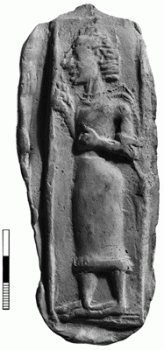American Journal of Archaeology | The Journal of the Archaeological Institute of America
You are here
Roussa Ekklesia, Part 1: Religion and Politics in East Crete
July 2009 (113.3)
Roussa Ekklesia, Part 1: Religion and Politics in East Crete
Analysis of votives from a sanctuary site near Roussa Ekklesia in east Crete sheds valuable light on archaic, classical, and Hellenistic cult practices. Part 1 of this study, the present article, presents a large collection of terracotta plaques and figurines from the sanctuary (ca. 630–450 B.C.E.). Part 2, to appear in a forthcoming issue of the AJA, will deal with a mostly later assemblage of lamps and pottery (ca. 500–150). These assemblages span a critical period in Cretan religious history and mark a transition from an orientalizing to a classical form of worship. Discussion here focuses on the art historical and religious significance of the terracotta plaques and figurines as well as the political dimensions of cult. The iconography of the plaques hints at male rite of passage ceremonies at a simple spring sanctuary of a goddess charged with natural fertility and human growth. She is depicted in the seventh century as a frontal nude crowned by a polos, an assimilation of a Near Eastern type. It is argued that Roussa Ekklesia functioned as a territorial marker for the state of Praisos, with the beginning of cult activity coinciding with the rise of this polis as a regional power. This study also examines the impact of representational styles as constituents of civic and ethnic identity.
Roussa Ekklesia, Part 1: Religion and Politics in East Crete
By Brice E. Erickson
American Journal of Archaeology Vol. 113, No. 3 (July 2009), pp. 353–404
DOI: 10.3764/aja.113.3.353
© 2009 Archaeological Institute of America


